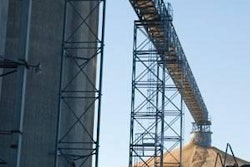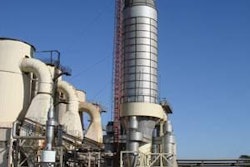.jpg?auto=format%2Ccompress&q=70&w=400)
Feed-related metabolic disorders of milking cows, ranging from ketosis and acidosis to hypomagnesaemia, could gain the attention of the dairy sector worldwide in the coming year. The technical director of the Brussels-based International Dairy Federation (IDF), Joerg Seifert, has told Feed International that the federation's standing committee on animal health is currently considering future IDF work in the area of production diseases in dairy herds. Possible subjects for this work, due to start in early 2008, include metabolic diseases and fertility problems as well as parasites.
Over 52 countries currently belong to the dairy federation, according to Mr. Seifert. "IDF membership comprises all stakeholders in dairying including dairy farmers, processing industry, suppliers to the dairy sector, academics, nutritionists, governments and food control authorities," he commented. "Since its foundation in 1903, the federation has been a science-based and non-political organisation committed to furthering the knowledge and practical application of the latest scientific findings throughout the dairy production chain.
Collaboration with global organizations
"The IDF standing committee on animal health was established about eight years ago. At present, it comprises 73 experts from 32 member countries. Among them are representatives of the Food and Agriculture Organization of the United Nations (FAO) and the World Organisation for Animal Health (OIE). IDF has formal agreements on collaboration with these two intergovernmental organizations.
"Our animal health committee is already addressing issues in relation to mastitis, infectious diseases and production diseases. The latter are regarded as particularly important in the context of animal welfare. As the latest example of our interest in contributing to knowledge on disease matters in dairy cows, there are important reviews about mastitis and bovine tuberculosis in a new report we have made available based on papers to our world congress in China in October 2006."
The report "Animal health: management and control of infectious and production diseases" can be ordered electronically as IDF bulletin 416/2007 from the federation's website of http://www.fil-idf.org, he points out. It is a research bulletin that sets out current scientific thinking on how to improve the health and welfare conditions for dairy cattle by investigating the causes and impact of infectious and production diseases and recommending strategies for prevention, management and control.
At the report's launch, IDF director-general Christian Robert commented that it emphasized the importance of benchmarking, surveillance and education. "The industry is working closely with veterinarians and scientists to improve animal health and the well-being of milking animals," he said, "in order to ensure the safety and wholesomeness of milk as well as help consumer perception and confidence in dairy products."
Builds on initiatives
From the IDF viewpoint, the continuing focus on cow health, welfare and production diseases builds on a series of initiatives. In 2004, for example, the federation co-operated with FAO in jointly publishing a ‘Guide to Good Dairy Farming Practice.' The user-friendly format was designed to give dairy farmers some guidelines in marketing safe, quality-assured milk and dairy products. It also highlighted the relationship between consumer safety and best practice at farm level.
"The guide can be downloaded free of charge from our internet homepage," says Joerg Seifert, "so it is available to everyone. Animal feeding practices are covered, of course. The feeding remarks and those relating to animal health, milking hygiene, water, animal welfare and the environment have been drawn from existing schemes around the world. While not intended to be legally binding, they aim to provide a genuine framework for farm assurance schemes to be developed worldwide and give the opportunity for individual countries to develop schemes that are specific to their needs."
As a follow-up to the Guide to Good Dairy Farming Practice,' he reveals, IDF has initiated work on elaborating a separate guide to good animal welfare in dairy production, in collaboration with OIE and FAO.
"In writing this guide, we make clear that the principles that define best management practices are generic. Dairy production systems vary widely around the world, but the animals within these systems do not. As a consequence, the focus is necessarily one in which the measure of success is based on the outcomes for the cow rather than the achievement of inputs into the system."
Production diseases
Other work has been completed recently on lameness in dairy cattle, its prevalence and consequences for the milk industry. More on production diseases in cows is due to be discussed at the 2007 World Dairy Summit set to take place in Dublin, Ireland, over six days starting 29th September.
A new area of discussion has appeared on the federation's agenda, Mr. Seifert reveals. Plans have been prepared for a first IDF Dairy Farming Conference to be held in Edinburgh, Scotland, in July 2008. It will be addressing aspects of climate change in relation to animal health and welfare in dairying.





.jpg?auto=format%2Ccompress&fit=crop&h=167&q=70&w=250)











